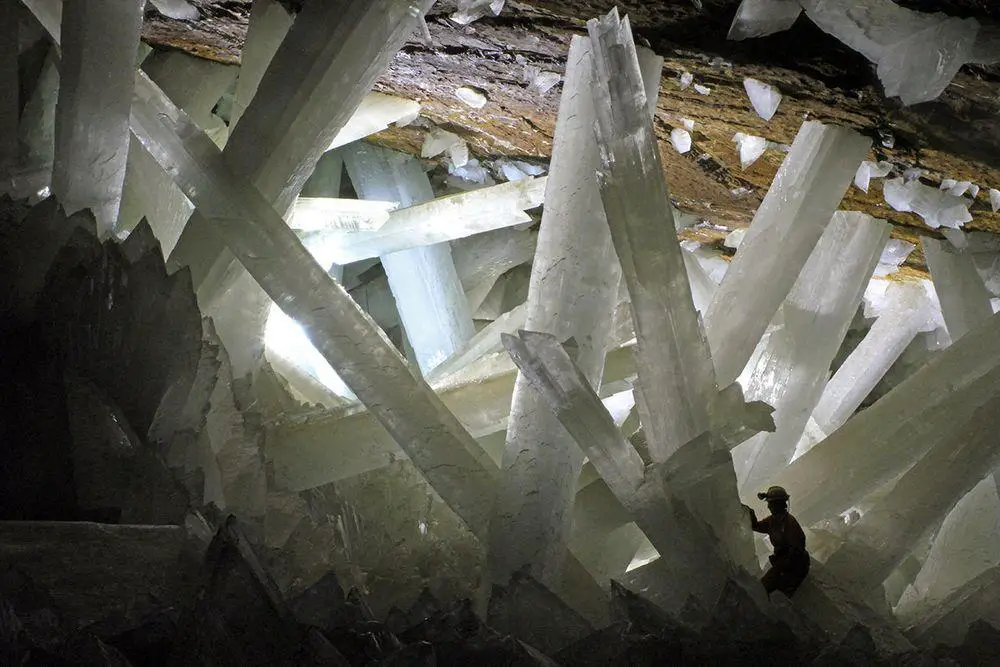World 🢖 North America 🢖 Greenland
Rare natural materials 🢔 Geological wonders 🢔 Categories of wonders
Wonder
Ikaite tufa columns in Ikka Fjord
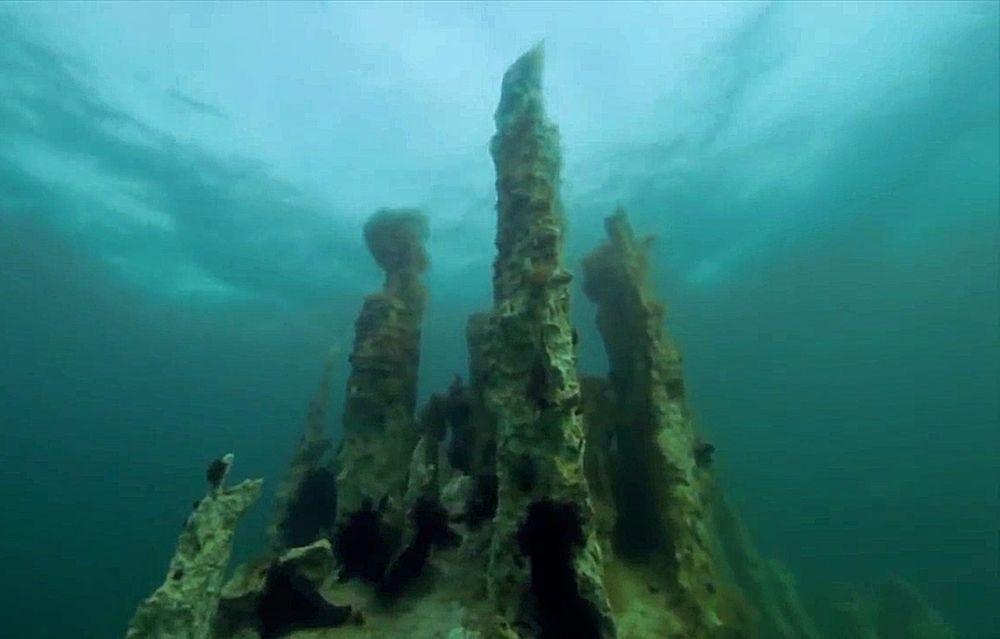
 In short
In short
In the waters of Ikka Fjord in Greenland has formed amazing and, most likely, unique natural landmark – a "forest" of white columns which rise from the bottom of the fjord nearly reaching the surface of the water. These columns – Ikka column garden – have formed from very rare and unusual mineral – ikaite.
 45.8%
45.8%
GPS coordinates
Location, address
Area
Map of the site
If you see this after your page is loaded completely, leafletJS files are missing.
 In detail
In detail
The metastable mineral – ikaite
Sometimes in near-frozen sea water, in places where lime-rich groundwater seeps in the seawater, congregations of an unusual mineral are formed by seeping water. This mineral – ikaite – is hexahydrate of calcium carbonate, with the chemical formula CaCO3·6H2O.
Ikaite can exist only in certain conditions – in cold water. If someone takes it out of the water or places it in warmer water, it quickly decomposes.
Nowadays ikaite or its traces can be found in seas worldwide – not very frequently… but people don’t dive to the bottom of cold seas in too many places anyway. Thus it is possible that this mineral is fairly common.
How ikaite was discovered
Greenland has thousands of fjords and most of these fjords are rarely visited by people. Something special should happen for people to observe unusual things on the bottom of such a fjord. After all: water there is cold and for the most part of the year – frozen!
Cryolite mine
Ikka Fjord is located in the south of Greenland – in an area which was settled by Norsemen in the 10th – 14th centuries.
In 1799 near this fjord was discovered a deposit of cryolite – the only industrial mine of this rare mineral in the world. This mineral turned out to be quite valuable – people used it to make caustic soda, yellow fireworks, insecticide. Cryolite was a valuable source of aluminum – metal, which in the 19th century was rare and very expensive. Later mining industry found a new use for it: cryolite was used to extract aluminum from much more common ore – bauxite.
Due to this the only cryolite mine in the world was very valuable. The small town of miners – Ivittuut – was developed at the mine and people lived in it until the 1980ies, when the mine was exhausted and production of artificial cryolite was mastered.
Weird skerries of Ikka Fjord
During their free time people from the mining town investigated the area around Ivittuut – thus it was known better than most of the other Greenland.
In the 1950ies – 1960ies miners learned from Inuit people that some 5 km from the mine, in the far end of Ikka Fjord – in Ikka Bund are located weird skerries. The bottom of the boats sometimes was hitting these white rocks in the middle of fjords.
According to the local legends these are drowned Norsemen who escaped from their village after a brawl with Inuit people and fell through the ice in the fjord. These Norsemen stand in the water up to this day, with stretched hands and long beards…
Samples of these unusual rocks were brought to Copenhagen and analysis did not show anything unusual – it seemed that these rocks were just pieces of calcite which is a very common mineral.
In August 1962 geologists (Hans Pauly) and a navy diver came to this site. Diver reported that weird geological formations – white, uneven columns rise from the bottom of the fjord. Many of these columns almost reached the surface of the fiord.
Discovery of natural calcium hexahydrate
Divers took samples of this material and it was weird: in a few hours’ time, these rocks disintegrated into a wet powder. Then they took the samples again and brought them in the refrigerator to Copenhagen.
Further analysis showed that a new mineral has been discovered – a natural calcium hexahydrate. Geologists named it after the locality of its discovery – Ikka Fjord.
Submarine springs
These spectacular columns have been formed by submarine springs which are issuing from the bottom of Ikka Fjord. The water of these springs is saturated with carbonates and phosphates from the nearby rocks. As the spring water is mixing with seawater, ikaite is formed and sedimented. Springwater continues to flow – and it deposits the ikaite further, gradually forming a natural column.
If Ikka Bund would be deeper, the columns would be taller. But now their height is limited by the surface of the fjord, by ice which covers the fjord in November – May and in summer – by the 2 m thick layer of freshwater over the seawater.
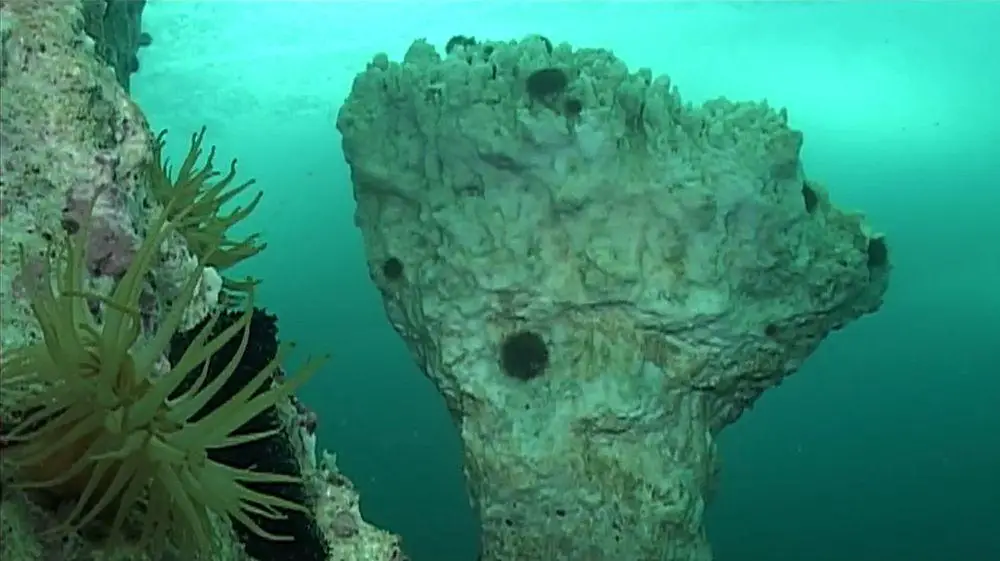
Ikka column garden
Over the area of approximately 0.5 x 2.5 km in the fjord are found some 600 ikaite columns which are 1 – 18 m tall and have a diameter of 1 to 10 m. Larger columns seem to be lined along fault lines. Some spectacular columns are just 0.1 – 0.15 m in diameter and rise up to 8 m tall.
Some columns at the top have flat, wide tops similar to mushrooms – they most likely were formed by dissolution of ikaite by freshwater.
Experiments show that columns grow fairly fast – some 0.5 m per year.
Another spectacular feature is the rich sea life around the columns. Life is sturdy – in spite of cold water and darkness under the ice cover live numerous interesting creatures – sea stars, anemones, urchins, and others.
Since 2000 Ikka Fjord is a protected natural territory.
References
- Hans Pauly. "Ikaite", a New Mineral from Greenland. Arctic. Vol.16, No.4. (Dec., 1963), pp. 263-264.
- Bjørn Buchardt, Carsten Israelson, Paul Seaman and Gabrielle Stockmann. Ikaite Tufa Towers in Ikka Fjord, Southwest Greenland: Their Formation by Mixing of Seawater and Alkaline Spring Water. Journal of Sedimentary Research. January 2001, vol.71, pp. 176-189.
Ikaite tufa columns are included in the following article:
 Linked articles
Linked articles
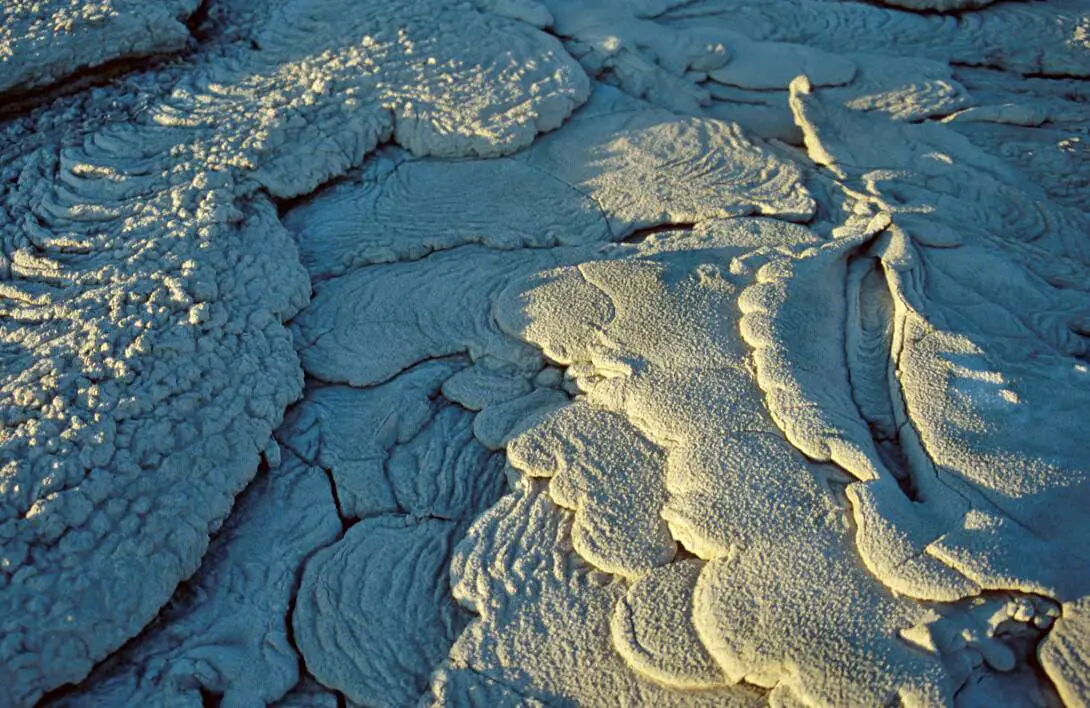
Rare natural materials
There are places in the world, where one can find such materials which are not present anywhere else on Earth – or can be found just in a few places. These wonders are included in the category of rare natural materials.
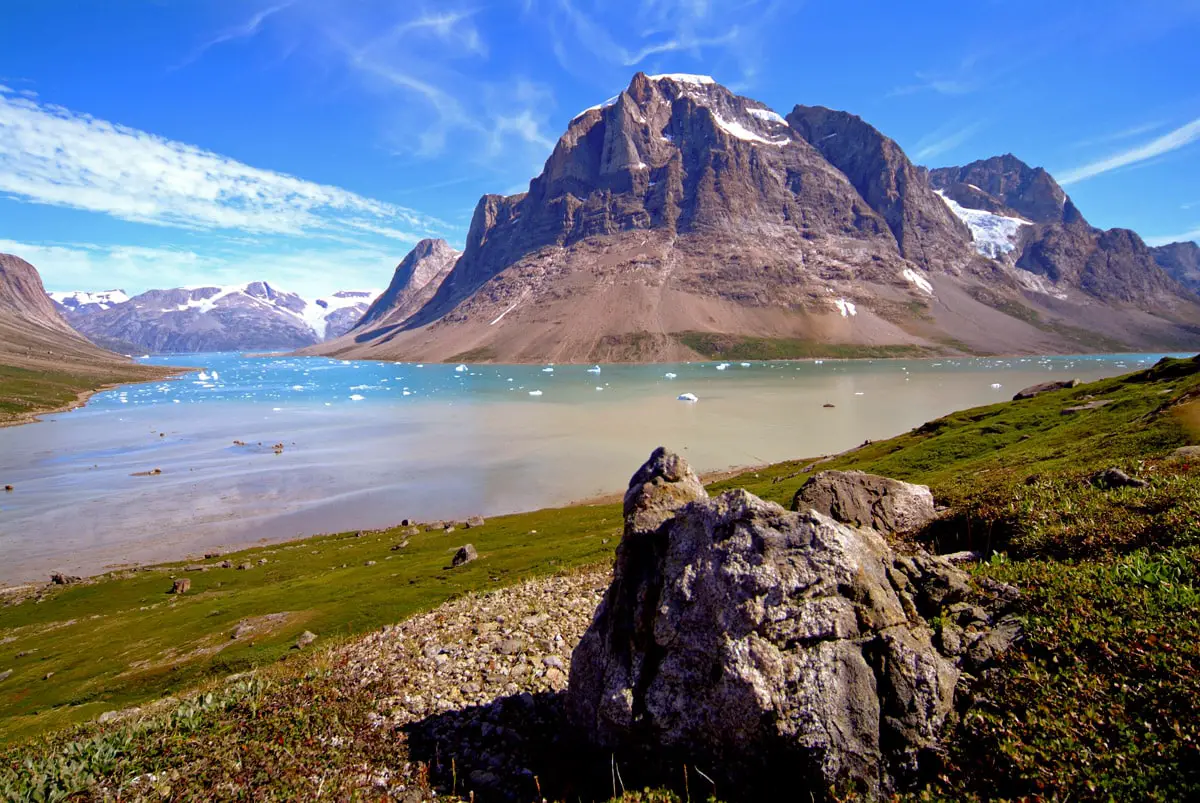
Wonders of Greenland
Although Greenland is the largest island in the world, its wonders and landmarks are surprisingly little known. Most memorable is the breathtaking scenery of this northern land. Greenland offers harsh, rugged sights, but in the late spring the meadows are covered with millions of flowers – and in the south could be found even a small forest!
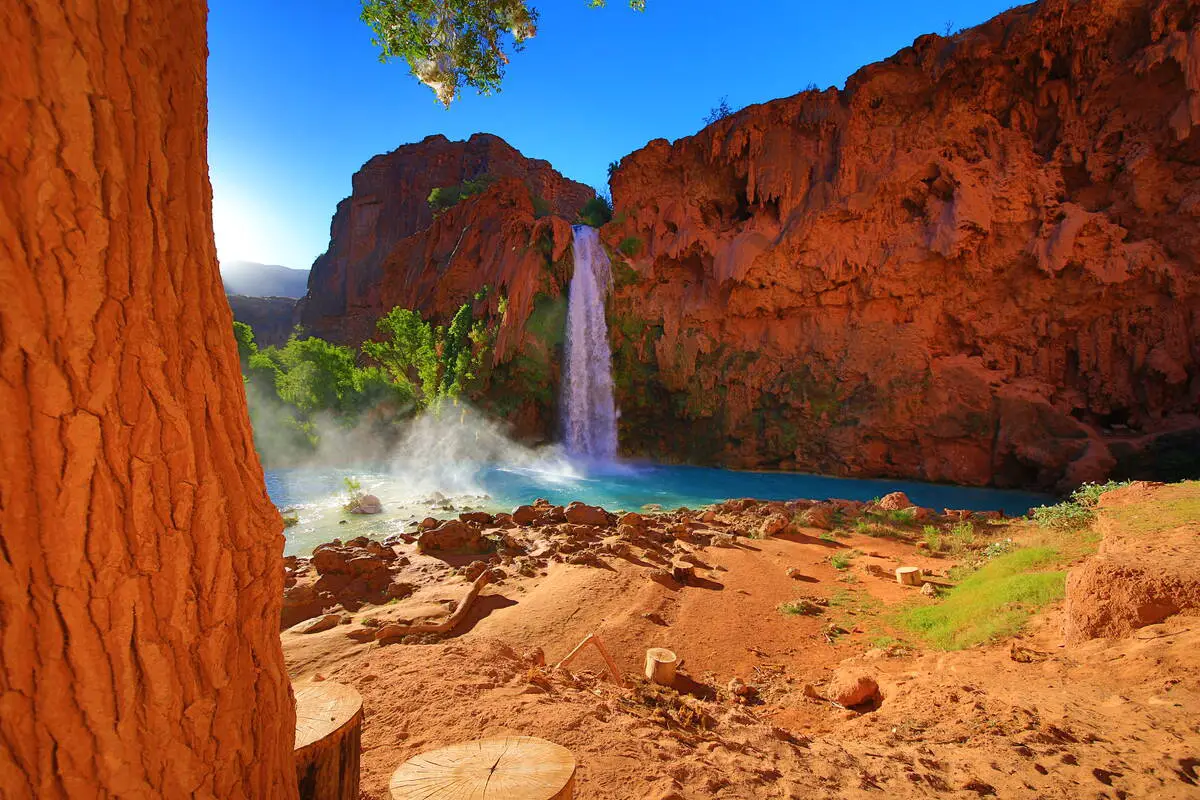
Wonders of North America
North America is a very diverse continent that extends from the northernmost land of the world to the moist tropical wilderness of Darien Gap. The most amazing wonders of North America are the prehistoric monuments of Mesoamerica, the geysers of Yellowstone, and colonial architecture.
 Recommended books
Recommended books
Geological History of Greenland
The mountains and fjords of Greenland preserve a record of nearly four billion years of Earth history – a story of mountain building, volcanic eruptions, primitive life, and ice ages. This volume presents an account of the geological evolution of Greenland, together with its mineral wealth and hydrocarbon potential.
A Wilder Time: Notes from a Geologist at the Edge of the Greenland Ice
Greenland, one of the last truly wild places, contains a treasure trove of information on Earth’s early history embedded in its pristine landscape. Over numerous seasons, William E. Glassley and two fellow geologists traveled there to collect samples and observe rock formations for evidence to prove a contested theory that plate tectonics, the movement of Earth’s crust over its molten core, is a much more ancient process than some believed.

